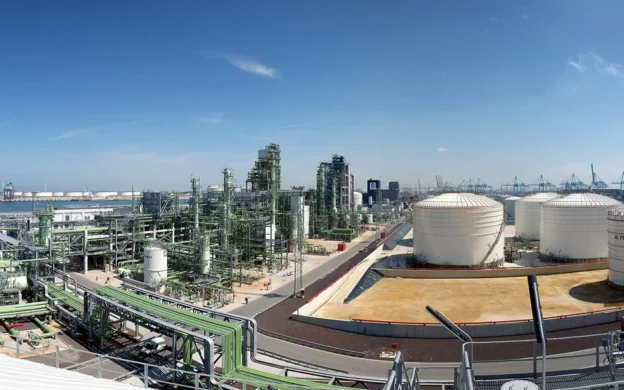The world’s largest high-temperature electrolyzer in an industrial environment has begun operating at the Neste refinery in Rotterdam, the Netherlands. The initiative is part of the European MultiPLHY project, which aims to demonstrate the viability of renewable hydrogen as a direct substitute for fossil hydrogen in the refining sector.
What makes this announcement special is that for the first time a multi-megawatt electrolyzer based on SOEC (Solid Oxide Electrolysis Cell) technology is integrated into a large-scale refining process. This system is composed of 12 modules and has the capacity to produce more than 60 kilograms of renewable hydrogen per hour, operating at 850 °C, with significantly lower electricity consumption than current technologies, thanks to the use of waste heat.
A European strategic alliance
The MultiPLHY project project is the result of collaboration between Neste, Sunfire, CEA and ENGIE, four vital companies in the European energy industry. Neste, a world leader in renewable diesel and sustainable sustainable aviation fuel (SAF) is responsible for integrating the system into its refinery and overseeing its operation, while Sunfire, recognized for its advanced technology in solid oxide electrolysis, is responsible for developing and supplying the electrolyzer.
For its part, CEA, a French public technological research organization, is coordinating the project and providing scientific expertise in energy technologies. Finally, ENGIE, a multinational energy company focused on low-carbon solutions, is in charge of the technical and economic evaluation of the project.
Neste is investing heavily in its Rotterdam refinery to increase its renewable energy production capacity.
Industrial decarbonization as the main objective
The implementation of the electrolyzer responds to the objective of replacing fossil hydrogen with green hydrogen in industrial refining processes, which will significantly reduce greenhouse gas emissions.
The MultiPLHY project has provided Neste with valuable knowledge and experience in integrating industrial-scale renewable hydrogen production at our refinery. We remain committed to exploring different avenues to replace fossil-based hydrogen in our refining processes in order to reduce greenhouse gas emissions in our own operations.
Jukka Kanerva, Senior Vice President, Renewable Energy Efficiency, Neste.
In addition, SOEC technology proves to be especially suitable for industries with waste heat availability, such as refining, as it requires less electricity to produce the same amount of hydrogen than other methods.
Next steps of the project
With commissioning completed, the consortium is now moving into a technical testing phase to validate the system’s performance on an industrial scale. This validation period will allow the technology to be fine-tuned and scaled to other emission-intensive industrial sectors.
In addition to operational and environmental benefits, MultiPLHY seeks to strengthen the hydrogen value chain in Europe, from technology supplier and end user to economic evaluation and research.
Source and Video: Neste.


